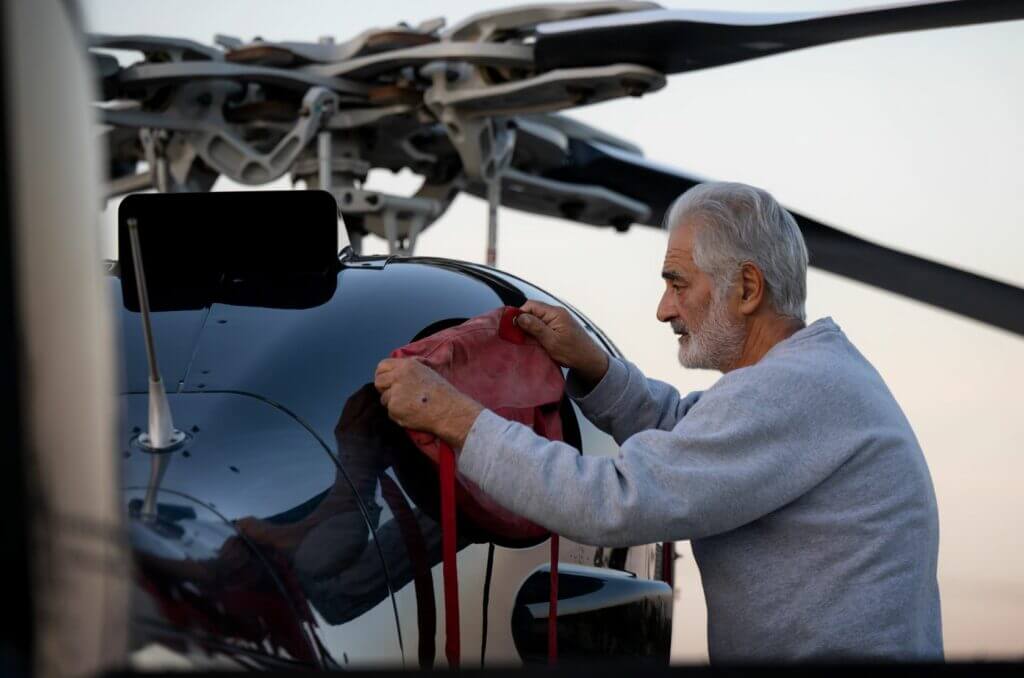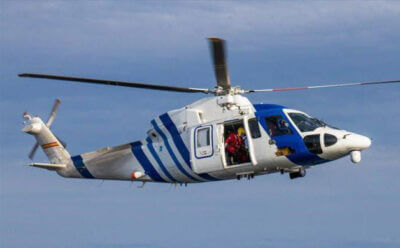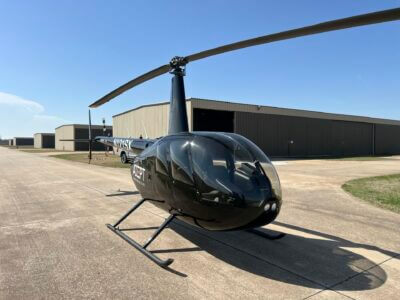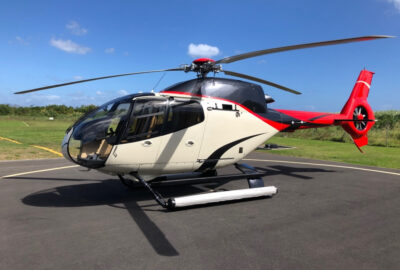FAQS
What a new pilot owner should know about performing their own maintenance
Two helicopter pilot owners share recommendations for preventative maintenance that you can do to keep your aircraft in the best shape possible.

By: Jen BoyerPosted on: April 2, 2024
When it comes to maintenance, a helicopter owner or operator is limited to performing only specific types of preventative maintenance as per the FAA Federal Aviation Regulations (FARs). These rules are a little different for kit-built aircraft, so for the sake of simplicity, we will address what a pilot can legally do to keep a certificated aircraft — either owned or operated by the pilot — maintained.
FAR Part 43 governs maintenance, including preventative maintenance. Part 43.3(g) stipulates any holder of a pilot certificate issued under FAR Part 61, except for a sport pilot certificate, “may perform preventive maintenance on any aircraft owned or operated by that pilot which is not used under part 121, 129, or 135 of this chapter. The holder of a sport pilot certificate may perform preventive maintenance on an aircraft owned or operated by that pilot and issued a special airworthiness certificate in the light-sport category.”
That said, a Part 135 operator can get approval from the FAA to allow pilots to perform preventative maintenance on rotorcraft operating in remote areas.
A full list of what constitutes major alterations, major repairs, and preventative maintenance can be found in 14 CFR Appendix A to Part 43. Preventative maintenance is described in section C of the appendix as a list of items that are allowed provided it does not involve complex assembly operations. The list is extensive as it covers all aircraft, from airplanes to lighter than air aircraft.

For helicopters with skids, that list is shorter and, again, only pertains to situations where no complex disassembly or reassembly is required. Examples of preventative maintenance in this list include replacing and refilling lubrication fluid (including oil) and filters; replenishing hydraulic fluid; replacing defective safety wire and cotter pins; refinishing decorative coatings on the fuselage; applying preservative or protective material to components; repairing upholstery and decorative furnishings; replacing seats and seatbelts; and, replacing bulbs, reflectors and lenses of lights.
It also includes replacing skis, cowling, spark plugs, some hose connections, prefabricated fuel lines, batteries, and nonstructural standard fasteners, as well as troubleshooting and repairing broken circuits in landing lights, and removing, checking and replacing magnetic chip detectors.
Owner pilots seeking to save money on maintenance can certainly perform everything listed in Appendix A, Section C. However, what you can do and what you should do can be very different.
Jason Pope owns Eternity Helicopters in Redlands, California. As the owner and pilot of his aircraft, he can legally perform the entire preventative maintenance list, but he never would.
“I’ve changed oil in cars a million times, so I am very comfortable changing the oil in the helicopter,” he said. “As far as any other maintenance, I leave that up to my mechanic. The good thing about using your mechanic is he or she could find something additional and by having your mechanic do preventative maintenance, you’re getting another set of trained eyes on your helicopter. For me, the responsible thing is to take it to my mechanic.”
Simon Jones, who previously owned his own helicopter before selling it to become a full-time traveling flight instructor performing safety training, has a similar outlook.
“I’d really rather my mechanic do all the maintenance,” he admits. “I’m not very mechanically inclined so I don’t even like doing the oil changes. Now, if I was operating remotely and I had the tools, I could change oil, replace a lightbulb, and check spark plugs, but I’d be inclined to have a mechanic check my work as soon as possible afterwards.”
Jones also advises the pilots he flies with to always work with a mechanic, whether that’s having a mechanic teach you the proper way to perform the preventative maintenance, having your work checked, or having the mechanic perform all the work.
“If you make just a little mistake, it can have a bad outcome,” Jones said. “For me, it isn’t worth the risk. I’d make sure I at least had the training from a mechanic and felt very confident before doing preventative maintenance, especially things beyond changing light bulbs, spark plugs, hydraulic fluid, and oil. It just isn’t worth it to risk making a mistake.”

That said, there are a great deal of things a pilot can do that are preventative — even though they are not listed in the FARs. For example, Pope makes sure his aircraft is always hangared or covered with the blades tied down when outside to protect the aircraft from heat, cold, and debris. He also ensures it is clean inside and out.
“During preflight, I always have a rag in my hand and am wiping things down,” he explained. “When you care how your aircraft looks, you take better care of it on a whole. It’s a mindset of taking pride in your aircraft. Also, I wipe things down inside the cowling. If the engine and transmission area is wiped down, and the next time I check it’s no longer clean, that immediately indicates there is a problem. If you weren’t keeping that clean, you may not find [the problem] as soon.”
When he had his helicopter, Jones kept it on the ramp at an airport not far from the ocean, which exposed it to salt. As an extra preventative measure, he frequently wiped down the aircraft and ensured the blades were clean; not only can dirty blades decrease performance, but the corrosive effects of the salt air can reduce paint life.
“As a pilot, focusing on keeping the aircraft clean and protected goes a long way in preventing additional maintenance,” he advised. “Let your trained mechanic be a part of everything else.”

Sikorsky S76C++
USD $ 1,850,000
Year: 2008

Leonardo AW169
Make an offer
Year: 2016

Sikorsky S76C+
Make an offer
Year: 2005

Bell 429
Contact seller for price
Year: 2010

Robinson R44 Raven II
USD $ 440,000
Year: 2018

Airbus EC120B
Contact seller for price
Year: 2006

Sikorsky S76C++
Make an offer
Year: 2008

MD Helicopters MD500D
Contact seller for price
Year: 1979

MD Helicopters 369E
USD $ 244,000
Year: 2008

Airbus AS350B3+
Contact seller for price
Year: 2010







